

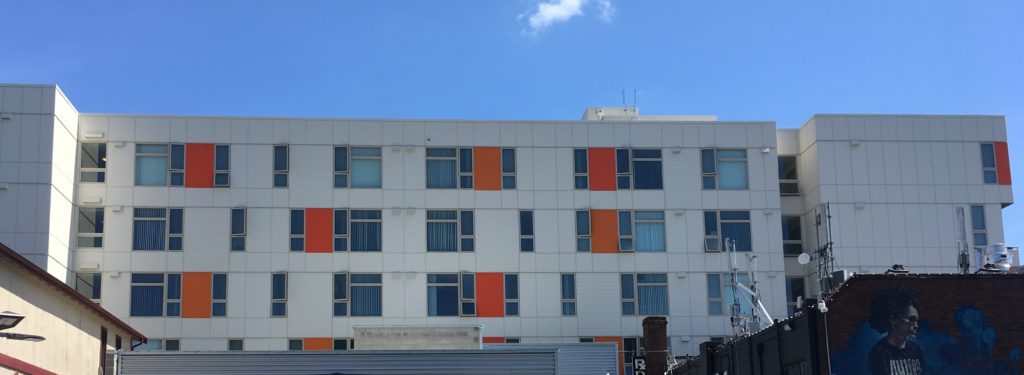
As we approach the new Liberty Bank Building on Union we can see from a block away that it is special. Its bold white with orange and brown accents stands high above surrounding buildings, a dramatic contrast to the innocuous developments on two corners of 23rd and Union, what was once the heart of the black community in the Central District.
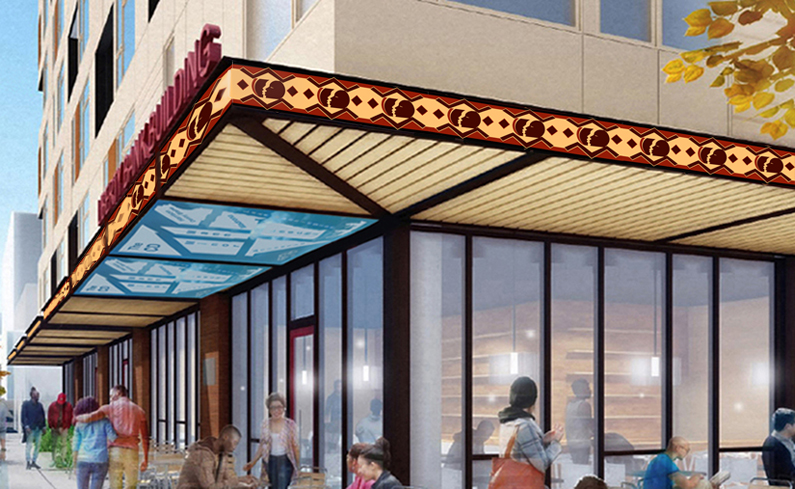
Coming closer we see a striking African inspired pattern on the roofline overhanding the sidewalk. On the wall of the building is a “brisket” weave pattern interrupting the regular rows of bricks. The older bricks of the pattern come from the original Liberty Bank, the first African American owned bank in the Pacific Northwest, opened in 1968.
As a result of red lining, this neighborhood in the center of Seattle, became a concentrated black neighborhood. In 1968 national civil rights legislation made discrimination in housing, sales and rentals illegal and the Seattle City Council unanimously adopted the same laws. In that same year Liberty Bank made it possible for African Americans to buy homes in the Central District, or anywhere else if they wanted.
When I moved to 20th and Union in 1997 ( an early but not the earliest white here, some of my neighbors came a good ten years earlier), middle class professional blacks who survived the crack epidemics of the 1980s and early 1990s were still here. But they were mostly elderly. In the next twenty years, the neighborhood has become dominated by white “settlers” not unlike the innundation of whites who almost destroyed the indigenous population in Seattle in the 1850s. At the same time, the cost of housing has escalated, affected by the massive tech boom here, and the character of the housing, increasingly closed off condominiums with private garages, has destroyed neighborliness. Many small buildings with neighborhood businesses have been sold to developers who build larger, more expensive spaces. We treasure those landlords who are resisting this trend (I am so fortunate on my block on Union between 20th and 21st to have three such landlords).
Enter the six story Liberty Bank Building! It is on the site of the original Liberty Bank. Not only are the people involved committed to enabling African Americans to return to their historic roots with affordable and low income housing, they also built the Liberty Bank Building with 30 percent Women and Minority Owned Business Enterprises (WMBE). 87 per cent of the apartments have Black renters. All the commercial spaces are going to Black owned businesses, most notably Earl’s Cuts and Styles who has been across the street for decades.

This success would not have been possible without massive efforts on the part of many different groups, notably Africatown, Capitol Hill Housing, Byrd Barr Place and the Black Community Impact Alliance. Africatown has been particularly visible, and vocal under the dynamic leadership of Wyking Garrett, son of the irrepressible Omari Garrett and grandson of one of the original founders of the Liberty Bank.
He is seen here speaking at the ribbon cutting. See my husband’s article about that in the Leschi News.
My main focus here is to examine the stunning art installations some easily visible to the passerby, others inside the lobby and partially visible from the street.
I can’t think of a building since the government supported art projects of the 1930s with such an extensive art program focused on narrative. All the pieces address either the history of the Liberty Bank or the Central District.


To begin with the outside. Esther Ervin inset an original safe deposit box into the center of her “drum benches” along Union. She has smoothed them off to make a comfortable place to site and patterned the wood in a basket weave. She highlighted the top of the base with a tile design in Afrocentric colors.
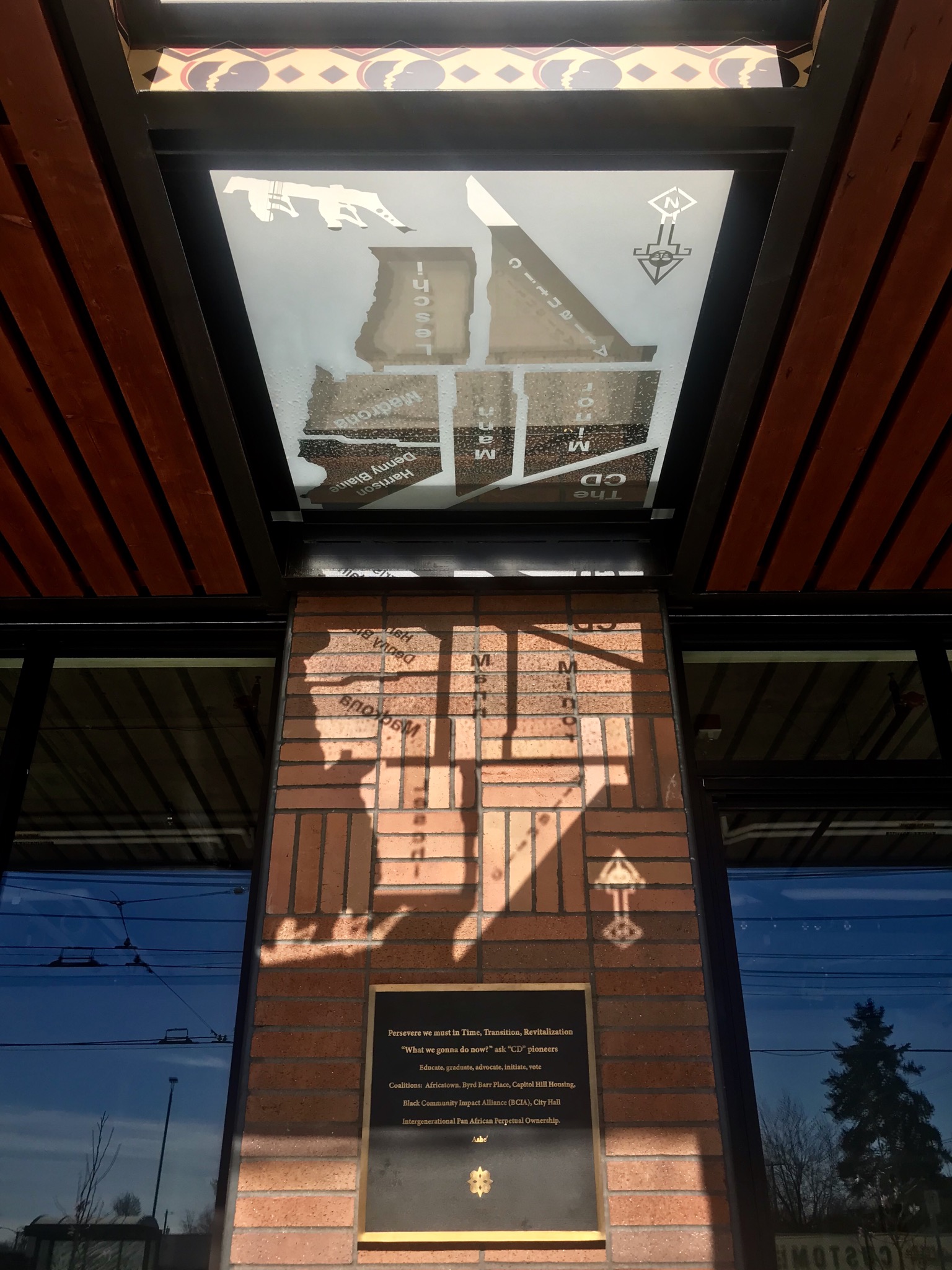
Look up at the building and you see the etched glass panels by Ervin that outline the red lined Central District. In the right weather they reflect onto the building where you see plaques with poems by one of my favorite poets, Minnie Collins. Here are two of them.
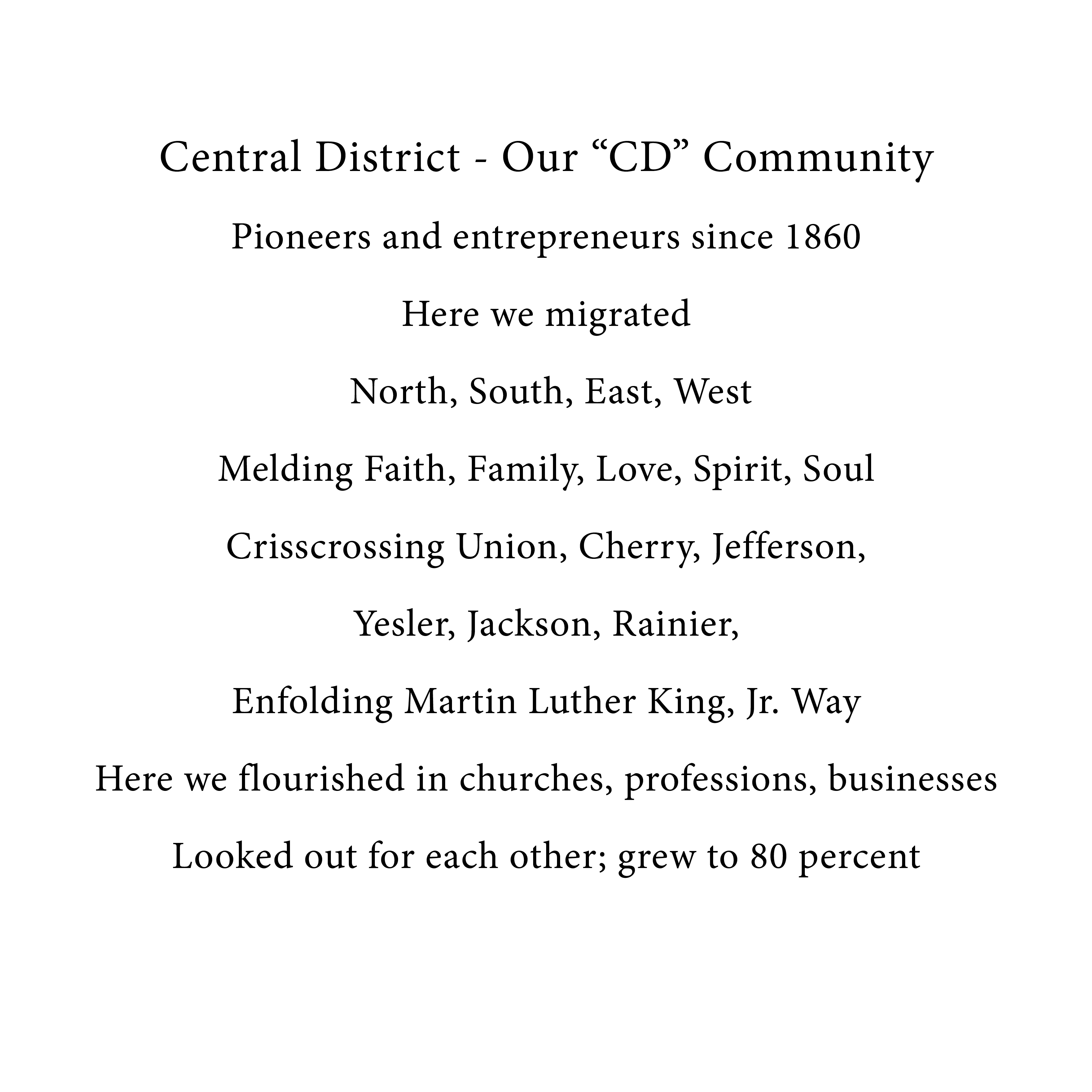
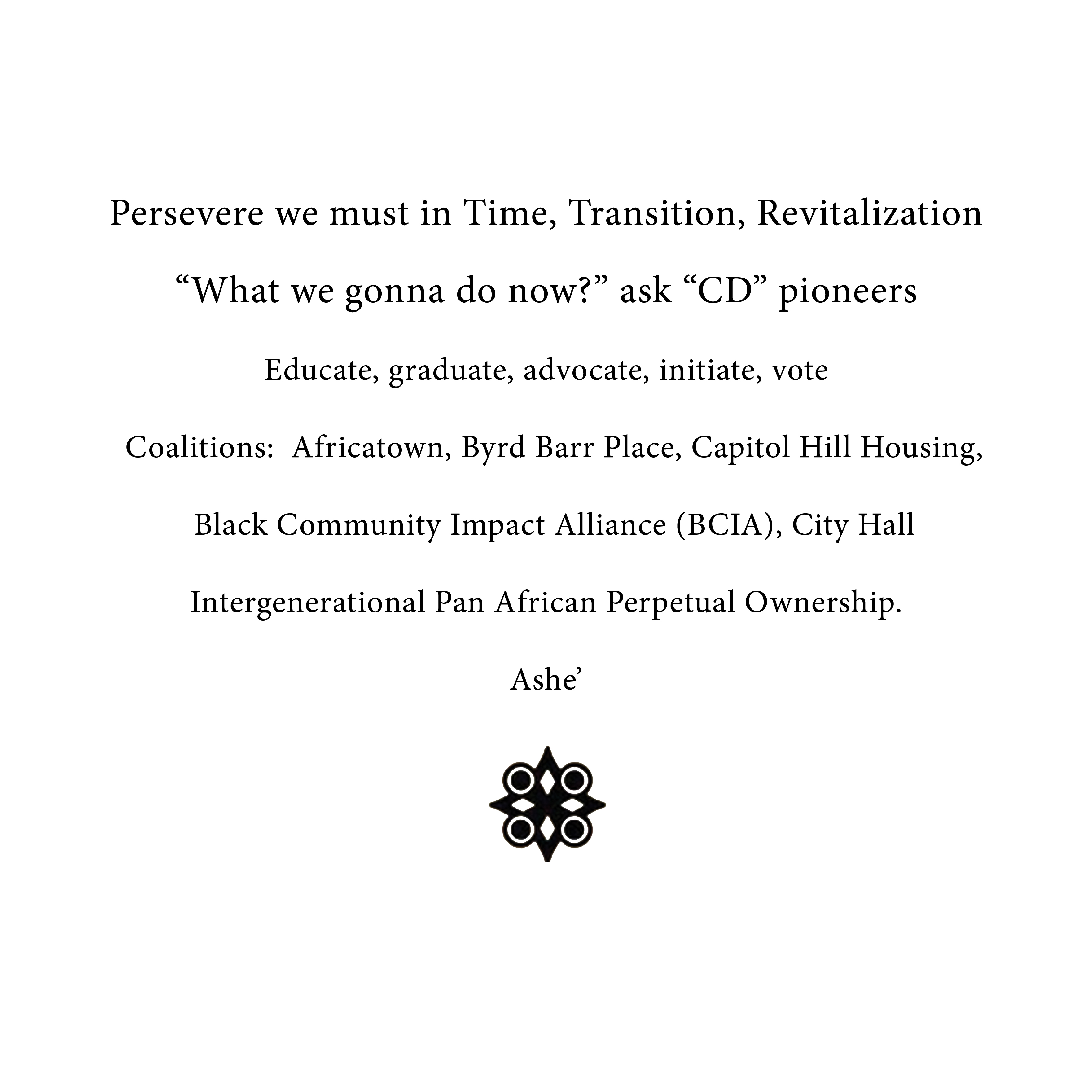
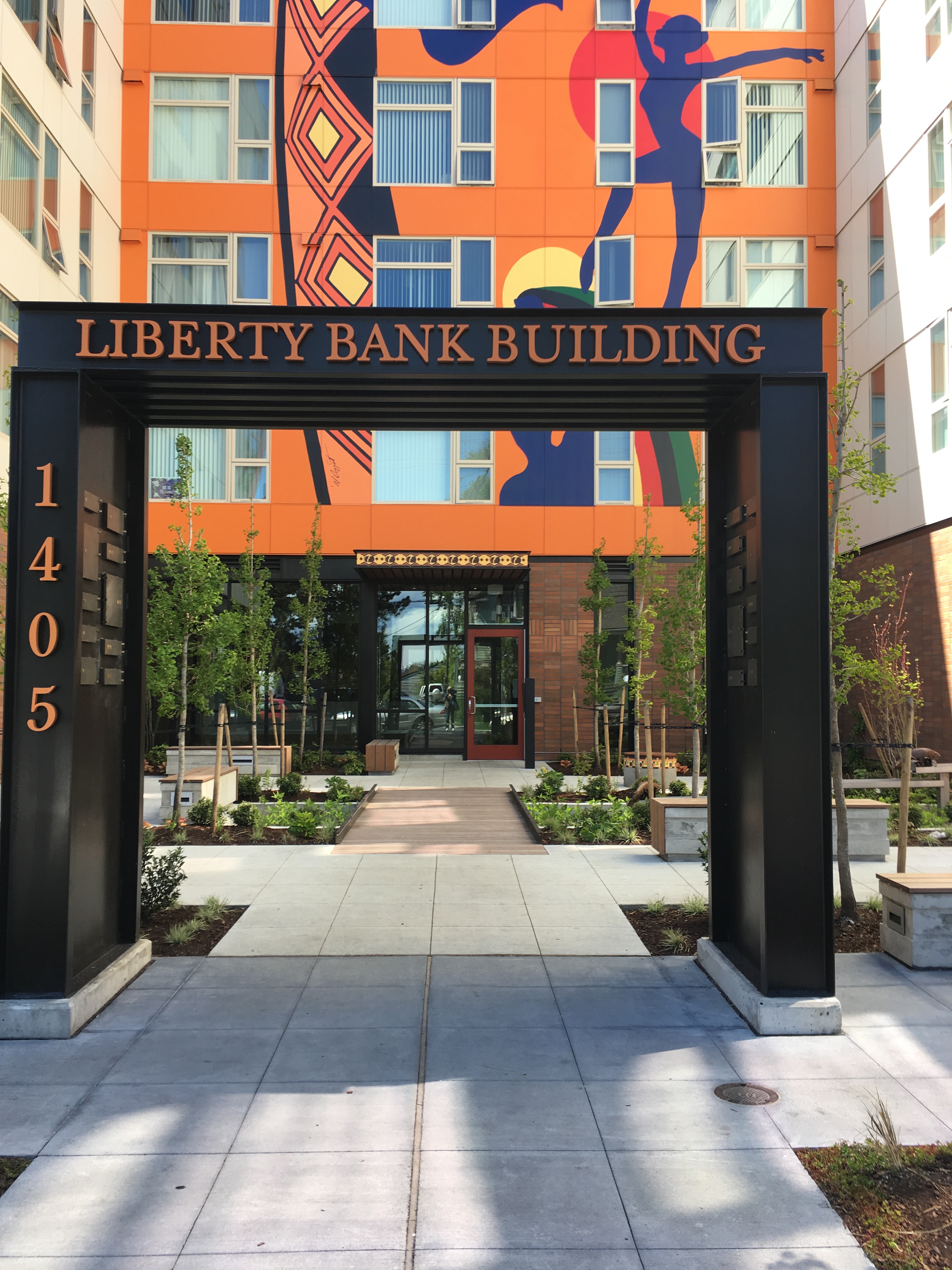
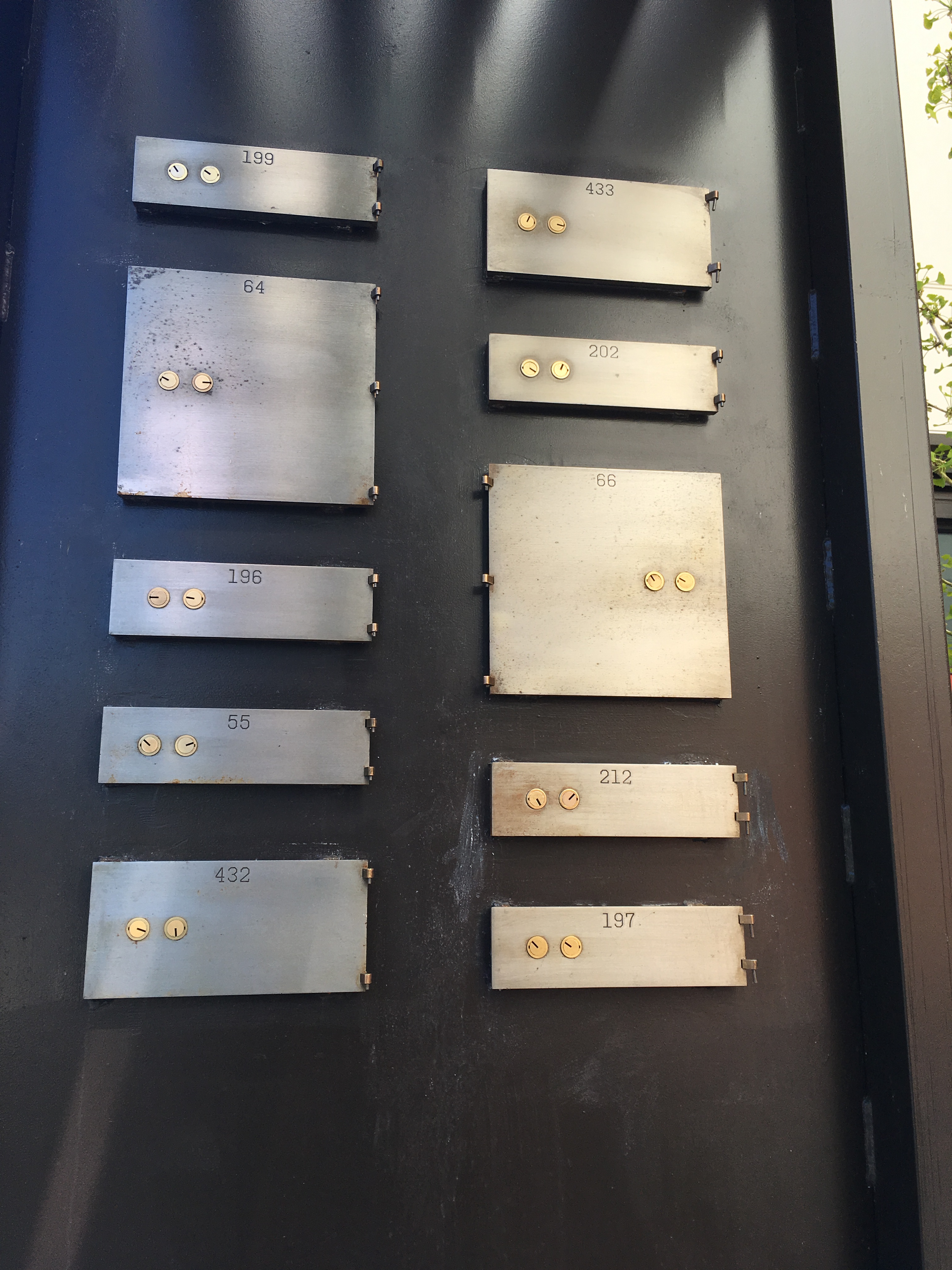
Walk around to the entrance of the building framed by a square open gate with more safe deposit boxes inserted into the two sides (including their original hinges).
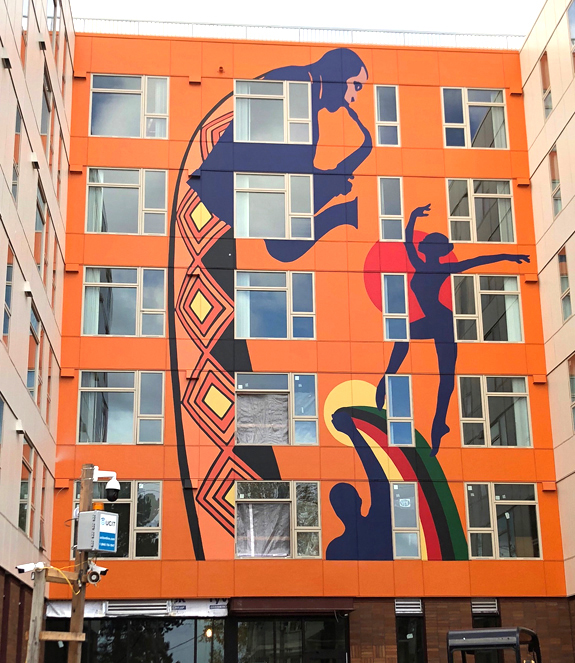
Dominating the façade is Al Doggett’s stunning mural celebrating creativity in the Central District, music, dancing and political resistance. It sweeps above our heads, filling the entire six floors of the orange façade. Doggett explained the design challenge of keeping the flow of the design in spite of all the windows.
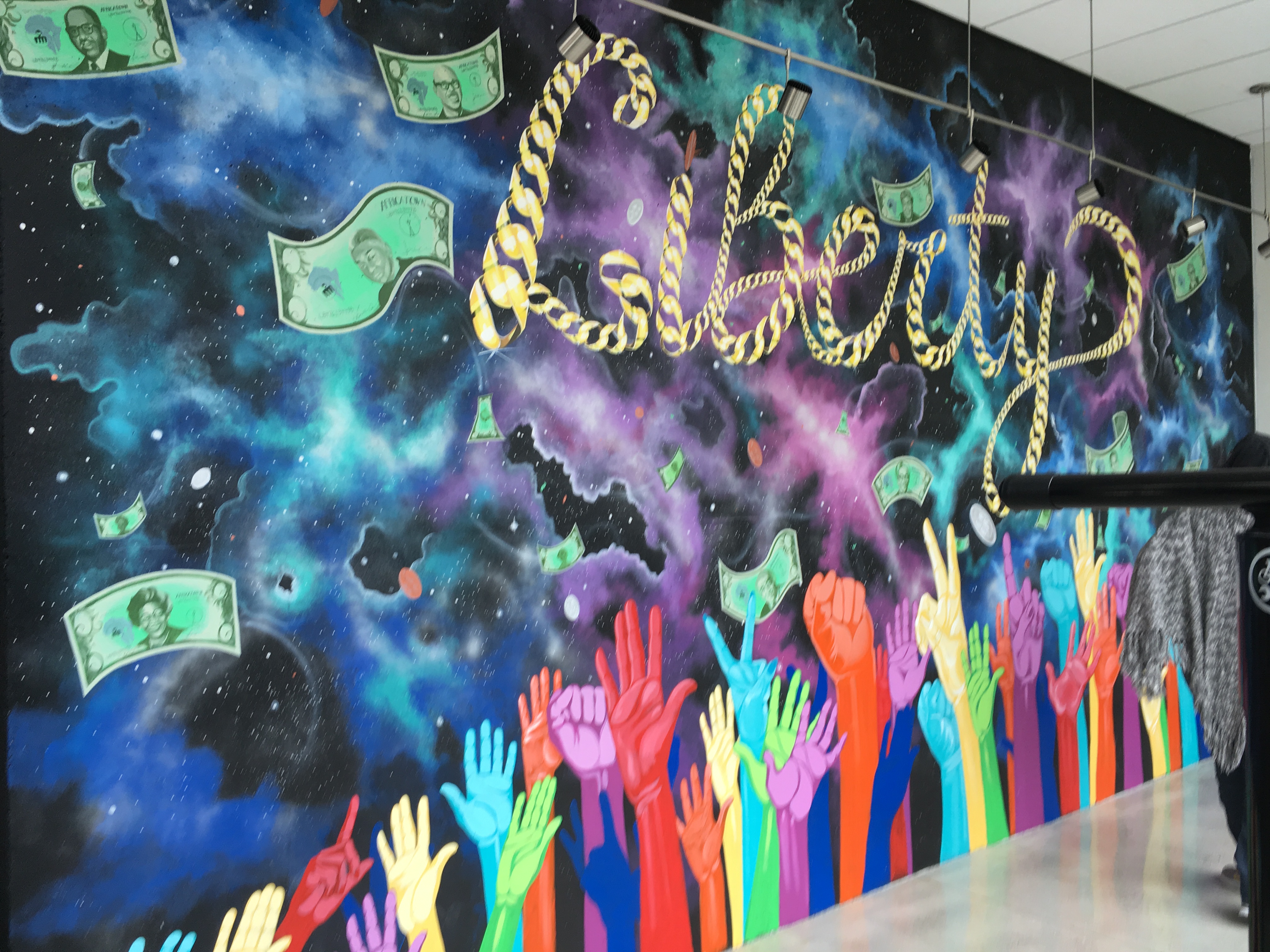
Just beyond the entrance and visible from the street ( through a window) is Aramis Hamer’s mural ”Liberty” with multicolored hands reaching for a gold chain spelling out Liberty, referring at the same time to freedom from the chains of slavery, the chains of prison and the gold chains of hip hop performers. In the sky bills fly with the faces of the founders of the Liberty Bank.
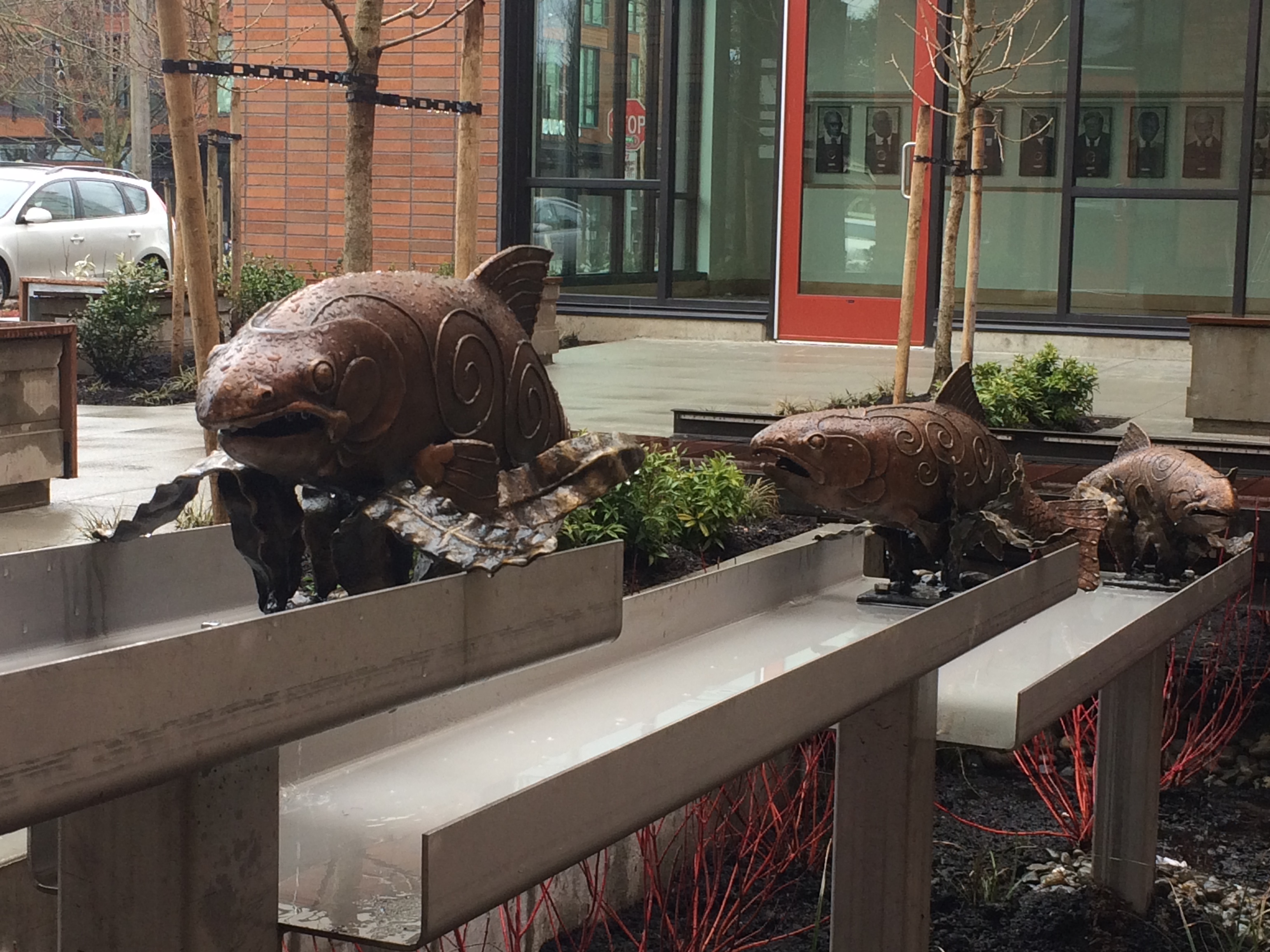

In the courtyard Esther Ervin’s three bronze salmon with swirling designs “Struggle Against the Current” swim over reeds in a channel that will fill with water when it rains. They point directly to the difficulties that African Americans face in life.
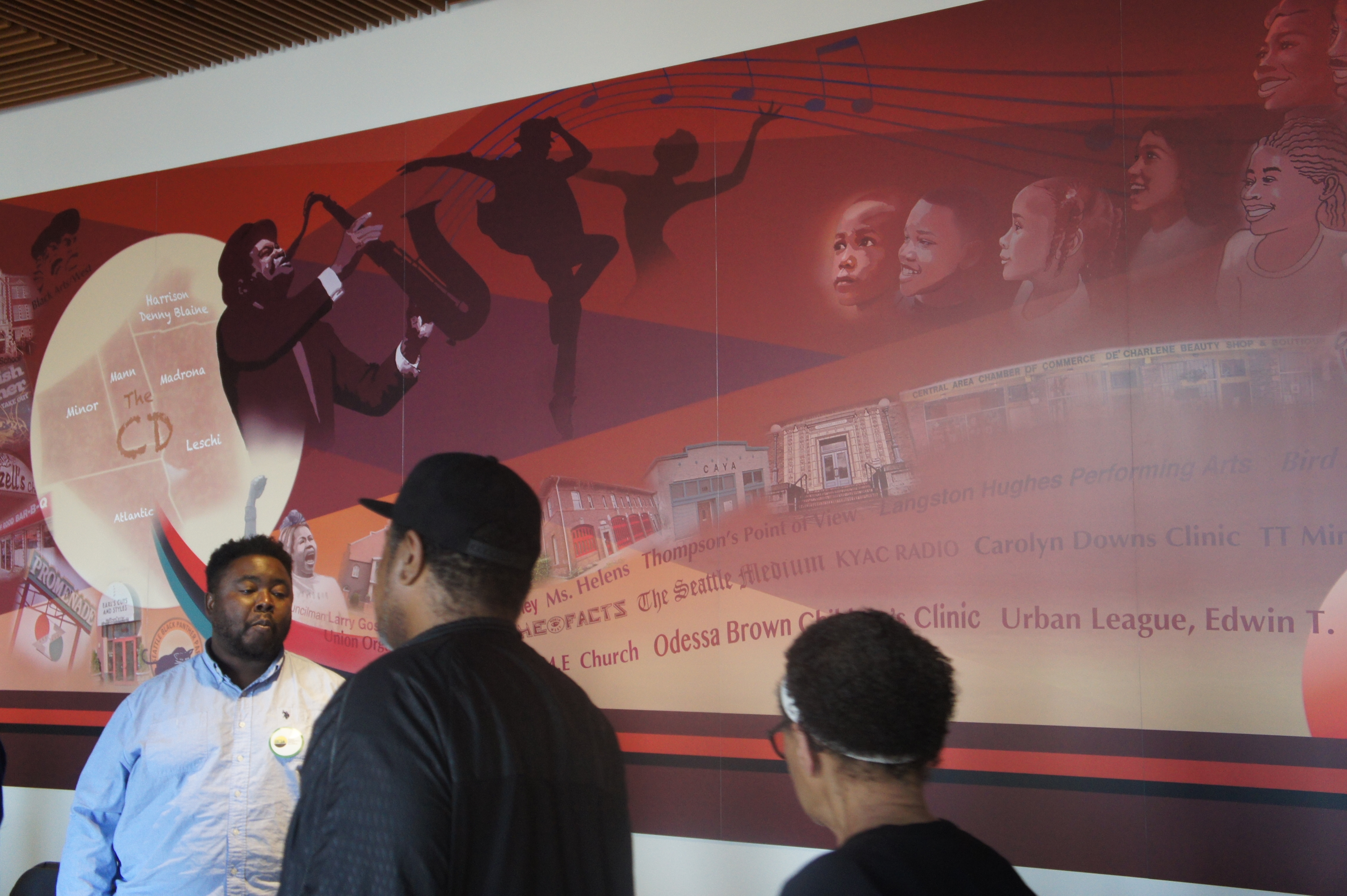
Inside the building the art visible only to those who live there or those who visit features Al Doggett’s large mural that details the history of the Central District. It names and depicts businesses, places, and people, some of whom are still with us. He unifies the complex composition with an undulating musical line emanating from a saxophone player and dancers and culminating with a choir of children and adults.
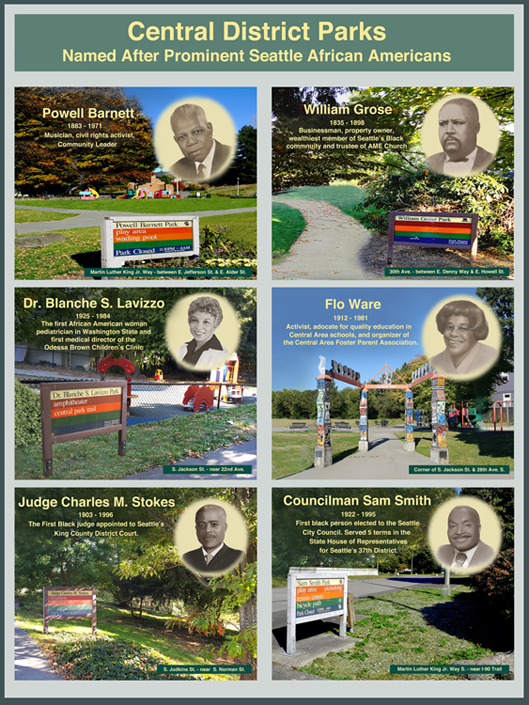
Doggett was also responsible for the panels outside the elevators identifying the twelve parks in the neighborhood named for outstanding African American leaders who lived here.
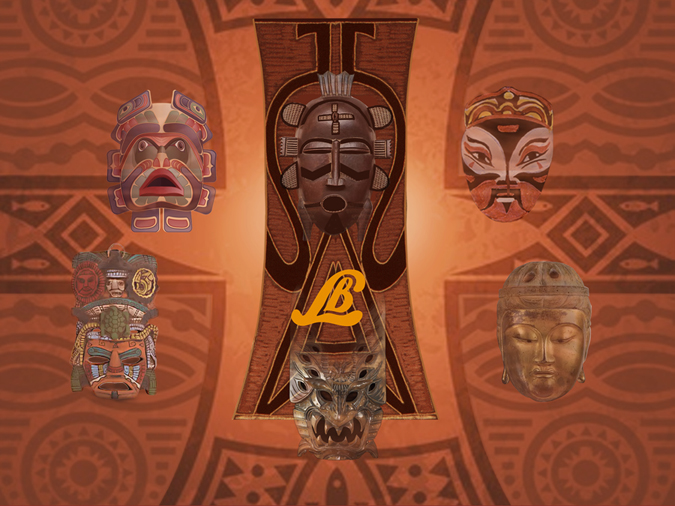
Opposite the elevator doors Doggett created one more mural called Ancestral Masks of Diversity, which honors the range of different ethnic groups of the CD, Native American, African, Chinese, Japanese, Filipino, Mexican.
Just inside the main door of the building is a large concrete support that includes the door of the original bank vault and four intense works by Inye Wokoma. The next blog post gives more detailed discussion about these works.
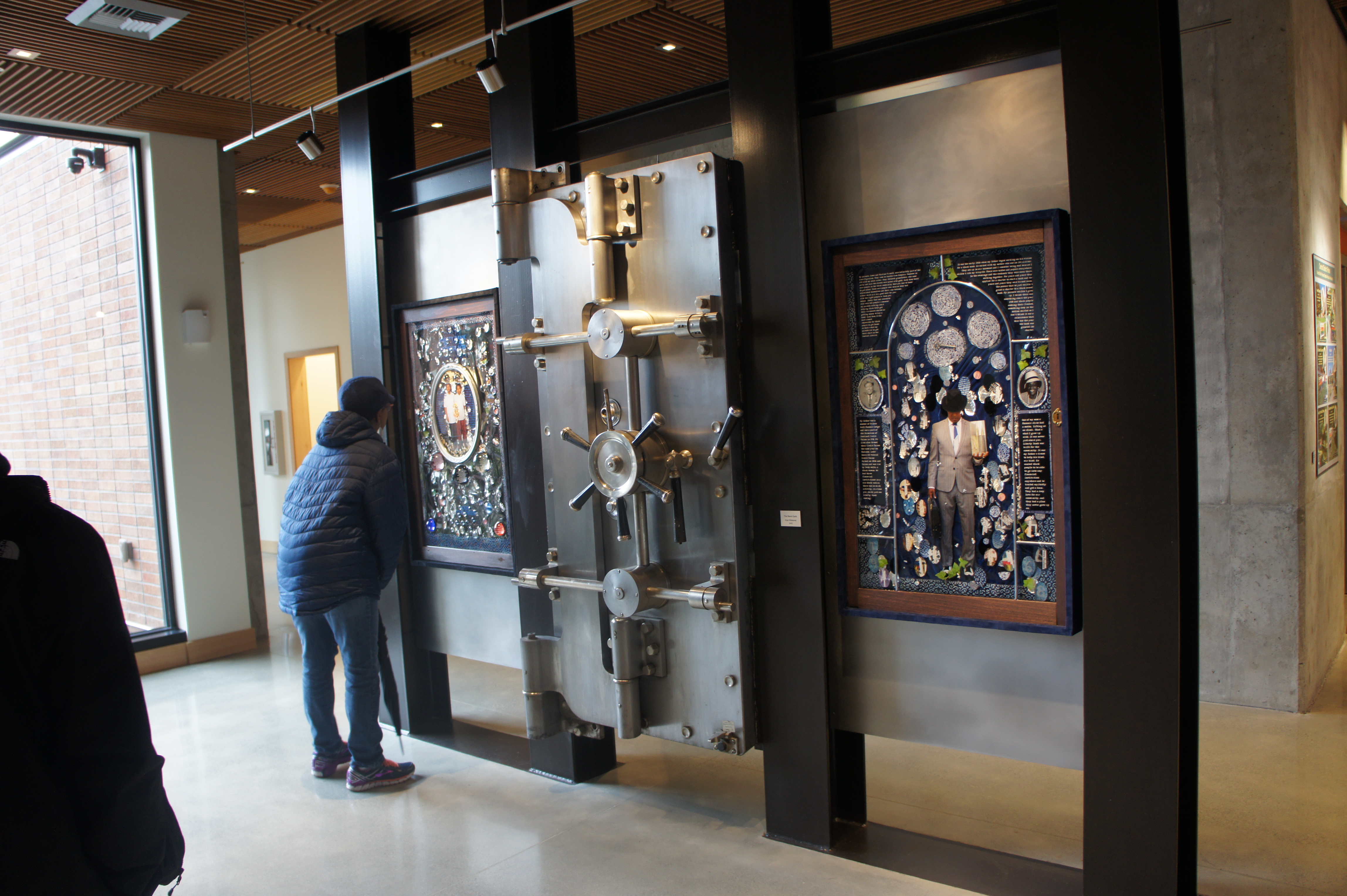
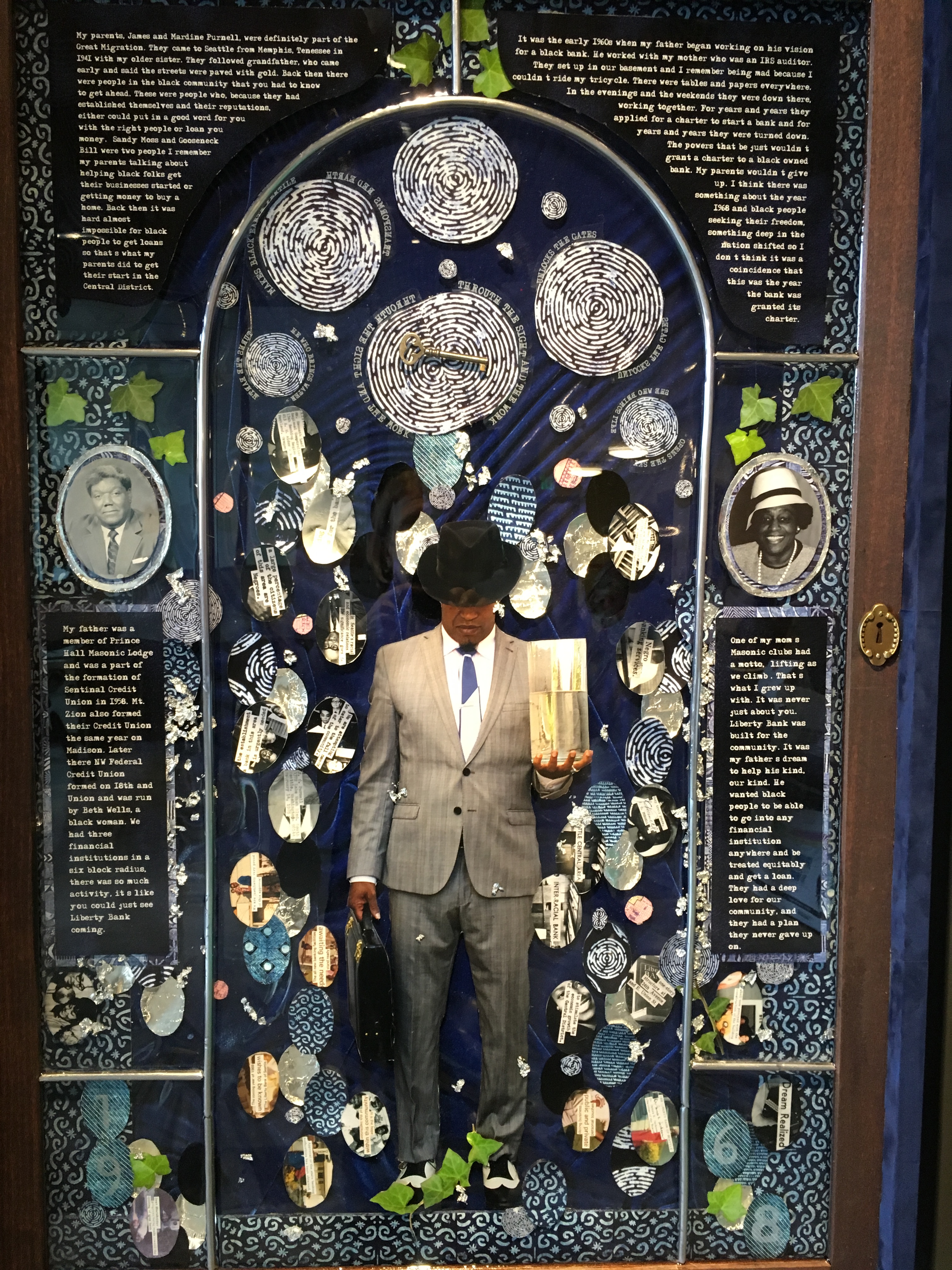
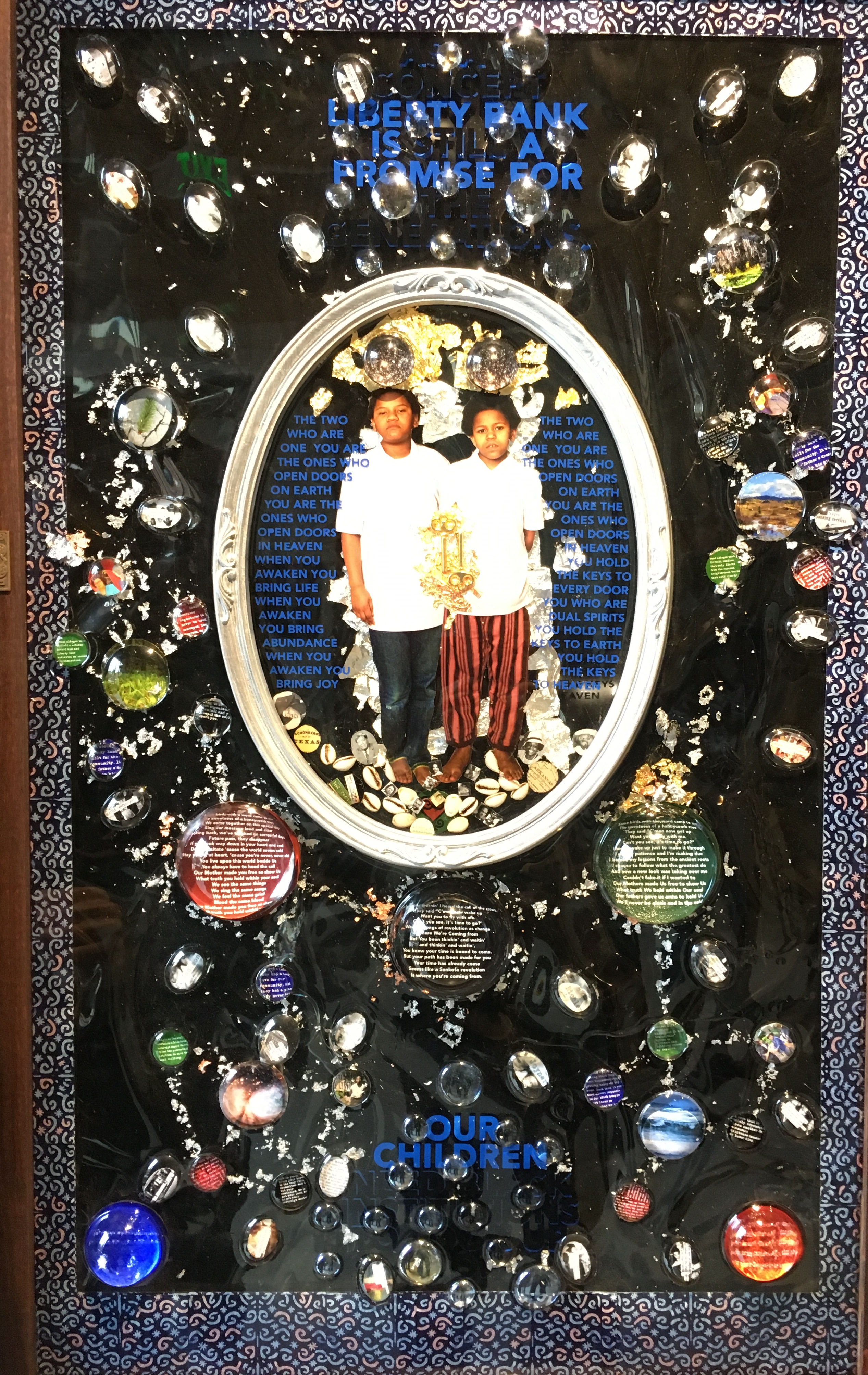
Lawrence Pitre depicts African Americans as they get loans from the bank,
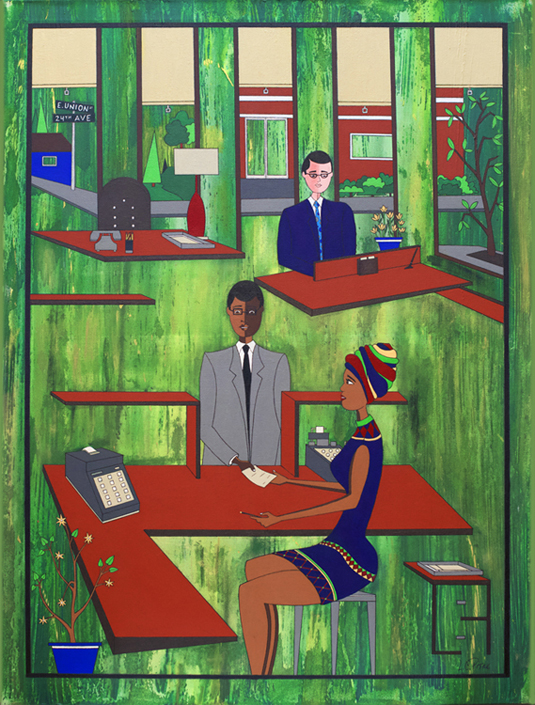
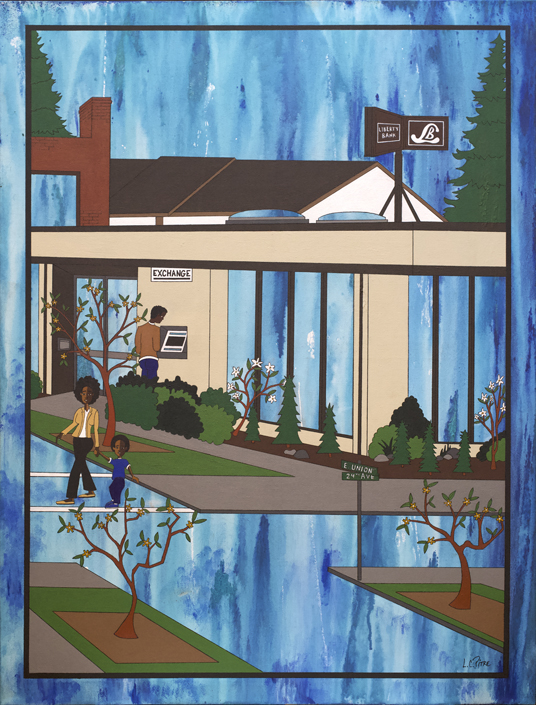
Ashby Reed used a palette knife to invoke the streets of the CD in a semi abstract composition.
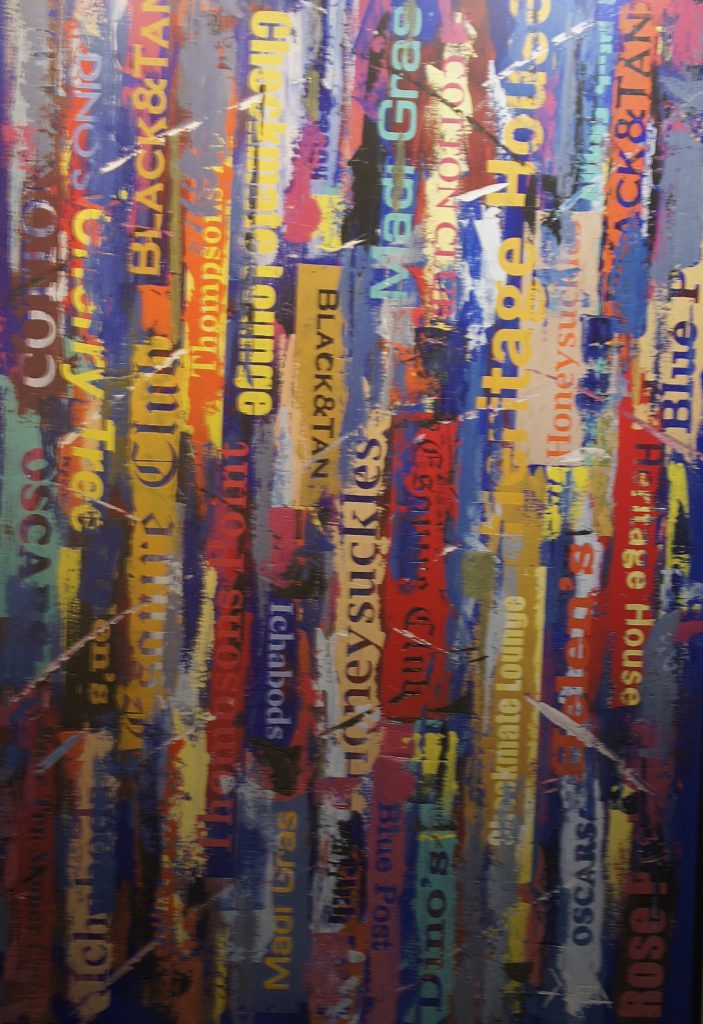
Finally Lisa Myers Bulmash created collage portraits of the architect of the original bank, the new Liberty Bank Building, and all nine of the multicultural founders of the bank. These collage portraits include a volume of an encyclopedia at the center, inset with a oval metal coin purse opening with varying images of the Statue of Liberty. The bow tie is a drawer knob. Bulmash is a master collage artist and every detail is meaningful from the fabric of the clothes to the background.
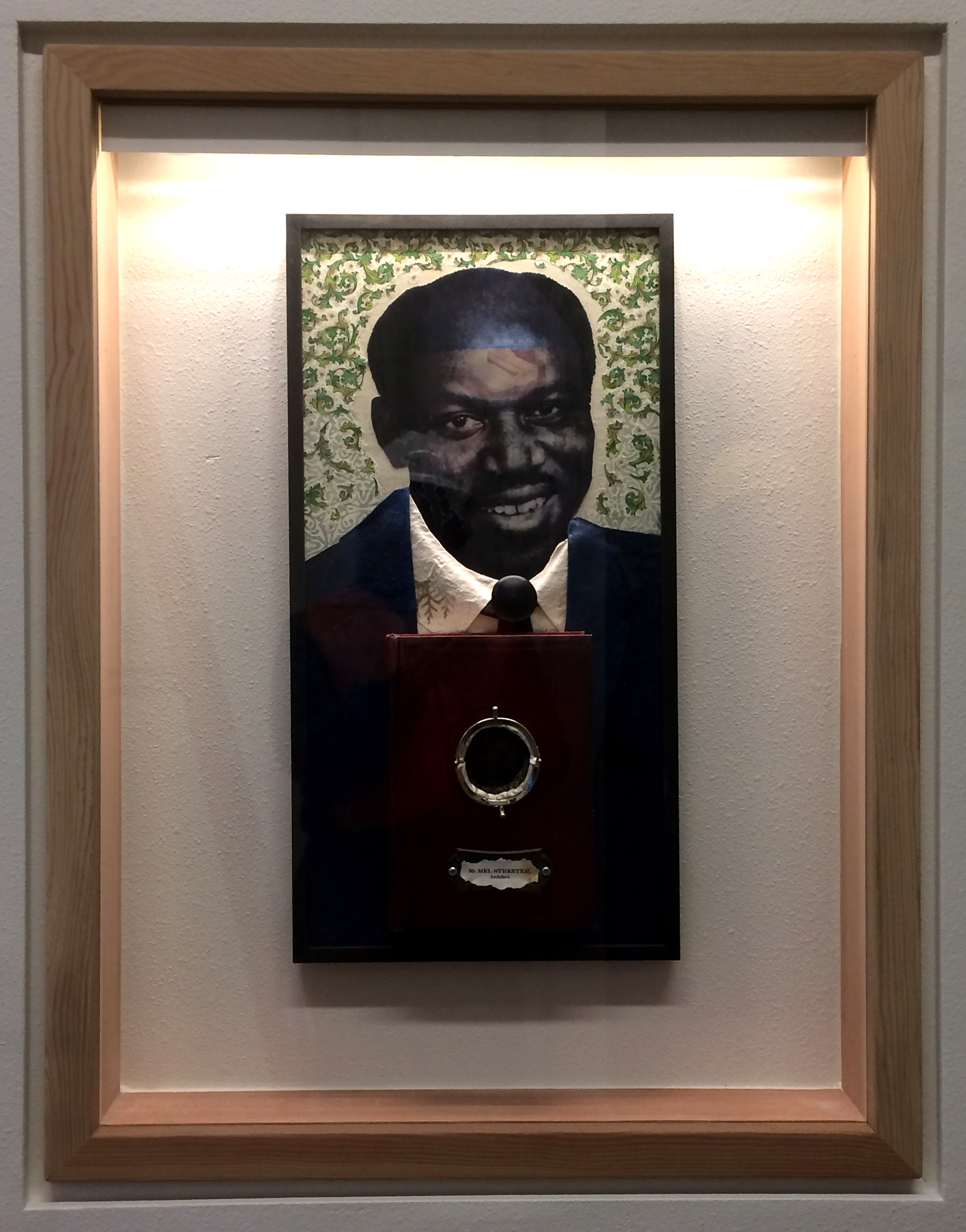
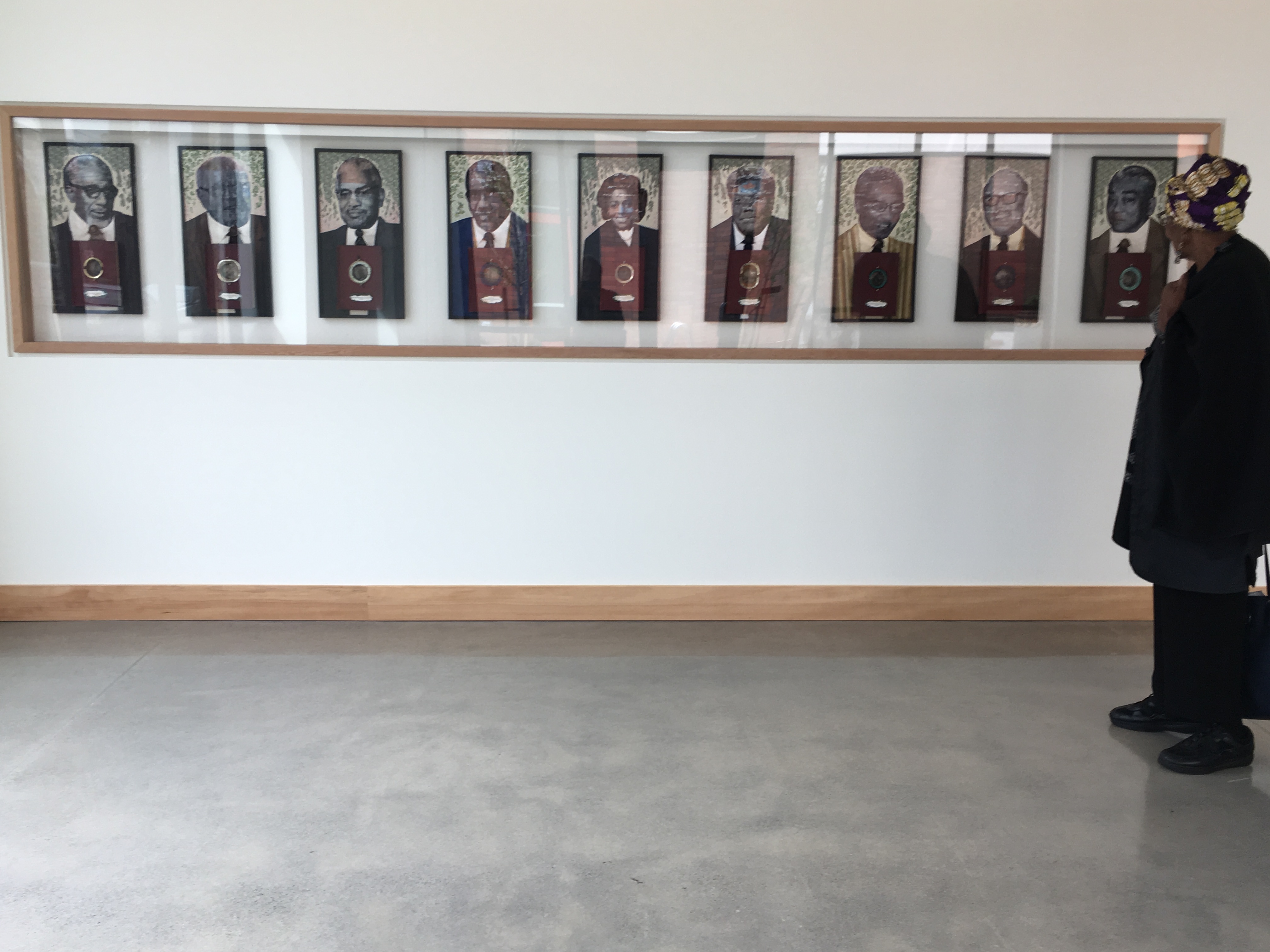
The commitment to art at the Liberty Bank Building is impressive. Al Doggett as Creative Director and Esther Ervin as Project Manager spent three years on the project, including their own significant contributions. So often these days art is an afterthought on new construction, or an afterthought, or non-existent.
In the Liberty Bank Building we have the start of the new Central District proudly establishing a unique presence,and pointing to the future.
Across the street, Africatown and others will be in charge of part ofthe full block to be developed. The original development here was part of the 1960s initiative to stimulate inner city growth.